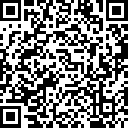
高考指南
考試信息
高考報(bào)考|
考試政策|
考試大綱|
考場(chǎng)查詢|
成績(jī)查詢|
錄取結(jié)果查詢|
分?jǐn)?shù)線預(yù)測(cè)|
一本錄取分?jǐn)?shù)線|
二本錄取分?jǐn)?shù)線|
三本錄取分?jǐn)?shù)線|
??其浫》?jǐn)?shù)線|
招生信息
高考政策
高考交流群

高考交流群



 鄂公網(wǎng)安備 42011102000050號(hào)
鄂公網(wǎng)安備 42011102000050號(hào)